Finders-in-the-field: Isabelline Wheatear, St. Mary’s, Isles of Scilly 08 Oct 2015
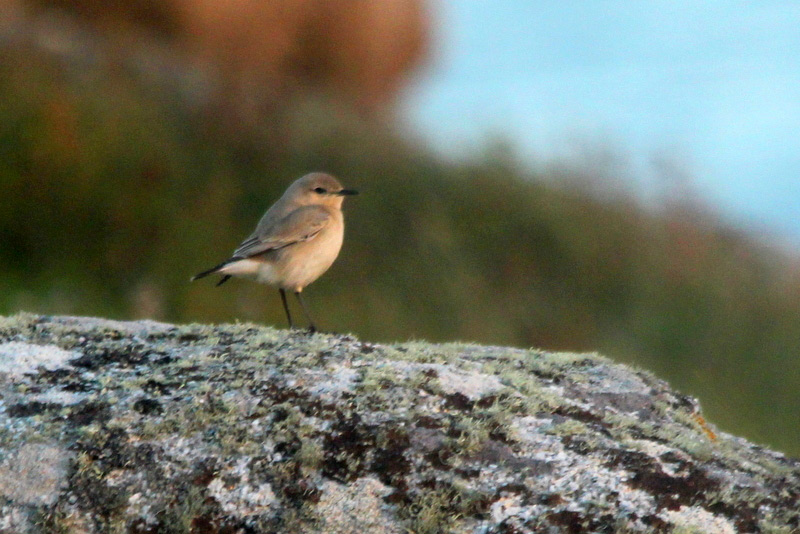
After probably the best spring on record hopes were high for the Scillonian autumn. With our early period piling on more rare than your recommended daily allowance! As September wound up the inevitable tension suddenly, like a spring, sprang in to a beautiful array of birds from virtually every conceivable compass point!
Multiple Bonelli’s Warblers along with Wrynecks, Pecs and Yellow-browed Warbler, not to mention lashings of common migrants were had on the weekend of 19th. Leading nicely into a Glossy Ibis found whilst on my coffee break at Tremelethen on Monday that barely had time to sink in before a distant pale Wheatear condensed into what could only have been a Desert as it gave a reasonable but all too brief flyby on my lunchbreak! Barely a day passed before it went MEGA with a sunny afternoon on Agnes producing Grey-cheeked Thrush and Blackpoll! By now the amount of adrenalin flooding my system had rendered me a quivering wreck. So strolling up to a Red-throated Pipit in the hand the following morning and seeing lovely long primaries, indicating only one thing – Pechora! Just about finished me off! Another sunny day ensued with another trip to Agnes securing fantastic views of Red-eyed Vireo had us all wondering, is this going to stop? What else is out there! I need to lie down.
And so it is with this question ringing in my head, full of optimism, that I finished work to spend the entirety of the month birding hard before I miss the 2016 season (I will be in the Southern Hemisphere!). Unfortunately the weather and birding forces have been slightly off-kilter since then with only one or two ‘decent’ birds among an often quite diverse and numerous array of common migrants. It’s been lovely birding, but I live here, and I couldn’t help long for something to entertain all the Scilly stalwarts. Quiet times like this it is easy to slip into ‘its probably nothing’ mode and stop checking birds as thoroughly. But this is Scilly in October! So I get an added burst of motivation as, if nothing’s been found, then it’s still out there! So I continue peddling around St. Mary’s on my battered old bike for 12 hours each day, hoping that being in the field constantly might improve my chances of getting lucky.
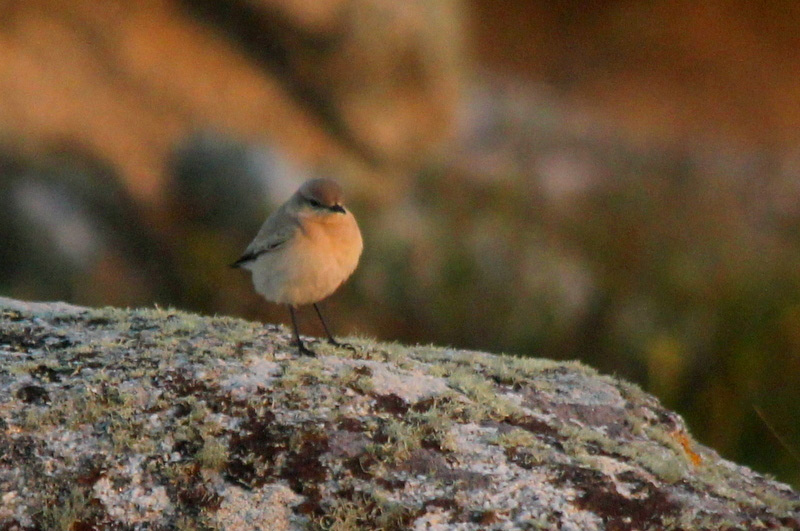
With this sentiment I watched the sunrise from Bant’s Carn on a lovely still October 8th. It felt rare, like good passage weather and stuff was trickling in. With such fine conditions I planned on hitting the headlands and golf course. Usually fairly forsaken windswept places, on sunny still days they explode with Pipit and finch flocks while wheatears move through. Having done most of the eastern side of Mary’s my bike promptly broke due a brake problem rendering me without brakes! Luckily Spider (Kris Webb) offered to give me a lift to the Golfcourse and Airfield as he too wanted to check them out.
After a deathly quiet lap around the former we emerged onto the Airfield at 18:00 just as it closed. Walking carefully so as not to inadvertently boot a Short-toed Lark that had turned up earlier we reached the windsock where visiting birders were standing. I scanned down the runway as everyone always does and noticed a single white blob of a Wheatear by the turning circle, shining so brightly in the evening sunlight. We strolled further and came across the lark which inconveniently walked straight into some longish grass. By now we were a couple hundred feet from the turning circle and that wheatear was nagging on my mind. So having set my scope up for the lark I thought it would only be polite to check the wheatear, muttering something along those lines to Spider who was beckoning visiting birders over for closer views of Shorty. As soon as I set eyes on that Oenanthe I knew it was weird. Not weird like those Northern’s that you chase around for ages only to realise they aren’t as rare as they look at distance weird. No. This was weird in a very natural sense.
At this point visiting birders were arriving to find me storming off down the runway shouting “f##k the lark, we gotta get views of this wheatear!”. Stopping periodically, each closer view crystallised the birds’ pale pallid nature further. With my excitement growing along with the fear of confronting such a potentially difficult species I began running through features. Happy that despite not showing strongly marked black lore/super in front of eye they were there, and not too dissimilar to that of a photo of the recent French bird. Furthermore the big black bill, pallid sandy overall appearance (especially the coverts) and long-legged chat-like jizz were slowly convincing me that it was indeed, on and poppin’.
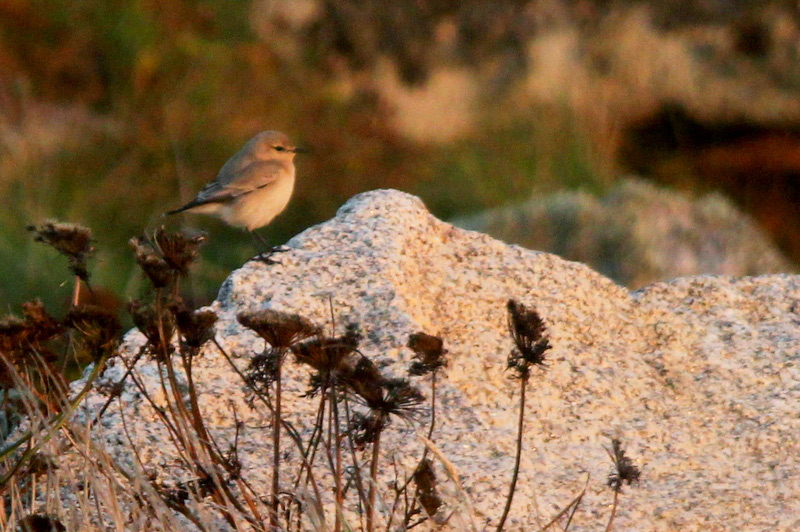
By this point I had already put the news out via the radio that the bird was in my most diplomatic language “a very good candidate for a possible Isabelline Wheatear”, but it was now 18:40 and light was fading fast. Radio responses concerning a ‘pale Northern Wheatear’ there earlier didn’t perturb me, as when you’re looking at the real-deal, even when you’ve never seen one before, you know it. This wasn’t Northern. No time to respond as the bird was on the move, now favouring the turning circle and the shady rocks and cliff edge beneath. Briefly joined by a (bright!) Northern sought only accentuate its monstrous chunky jizz.
Finally the moment I had been awaiting arrived, the bird swooped down to the next shady emergent rock fanning its tail showing a lovely broad black band. My body temperature spiked! Then as it perched filling my scope there it was – the black alula! Hallelujah!
Up to this point the coverts had been obscuring this feature, but now it was incontrovertible, self-found lifer! The radio message “It’s an Isabelline!!” went out and I called RBA. Now my ‘you know whats’ truly were on the line, well what was left of them anyway!
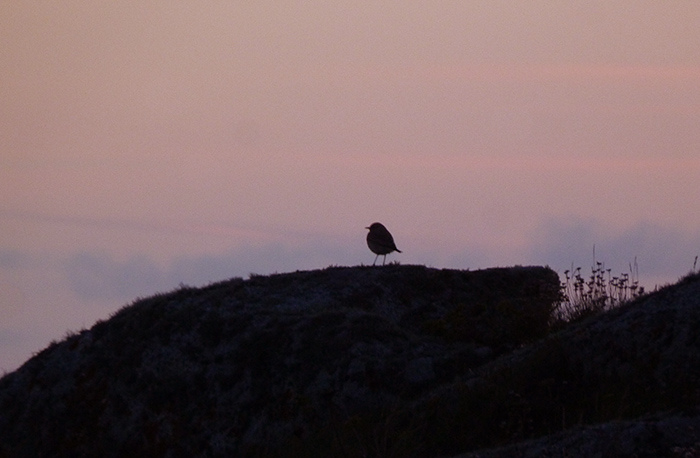
The bird performed superbly in the fading light, often perching for long periods like a chat, allowing all that stonk to be lapped up by myself, Spider and the lucky birders who were present at the time. A number of cameras were present enabling some cracking documentation to be obtained before the bird dropped out of sight behind the turning circle just as the first people were running down the runway, no pun intended. I offered to walk round the seaward side and hopefully locate the bird, which I did silhouetted against the purple sky tantalising out of view for the small crowd before it dropped out of sight forever (or for the moment?). Scilly magic at its best.
Accepted Isabelline Wheatear records for Britain and Ireland
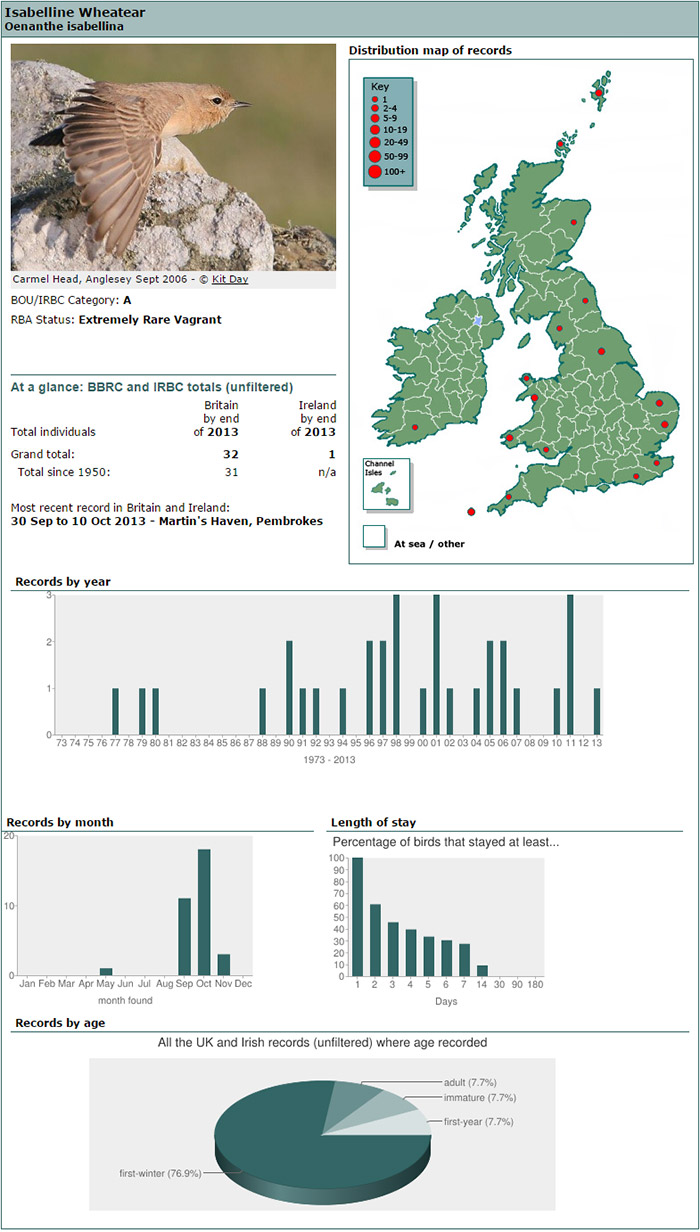
Will Scott
Longstone, Isles of Scilly
13 October 2015>
dub-birder.blogspot.co.uk
Write for Rare Bird Alert
Do you have a birding story you would like to share? From foreign birding trips to your local patch, finders accounts and more, we would love to hear from you.
All our articles are free for anyone to view and we include them in our weekly newsletter which goes out to thousands of birders every Wednesday. We also share them on our Twitter and Facebook pages, making sure your article will get read by as many people as possible.
If you would like to write an article please for us please get in touch with your ideas, thank you.
The RBA team








